Rolled materials are of concern to archivists because they become fragile and very difficult to open and view without damage. Tape presents another problem because it defaces an archival item, and cannot be easily removed without damage to the original material. It becomes yellow with age, and may dry out and fall off leaving a sticky residue behind.
We had seven boxes of rolled materials when we consolidated our archives, and so we sought help from our local conservator who is skilled in book and paper repair. She humidified the materials to flatten them. Then she removed the tape from a large map that had been badly torn from being rolled, and removed the sticky residue. After this, she repaired the torn areas using the reversible method we use in archival work, which is applying Japanese mulberry or kozo paper over the tear using wheat paste. This method is safe and should always be used when any material is torn.
Thank you to Jennifer Robertson of Book and Paper Conservation Services in London, Ontario for her expert work and for the photographs.
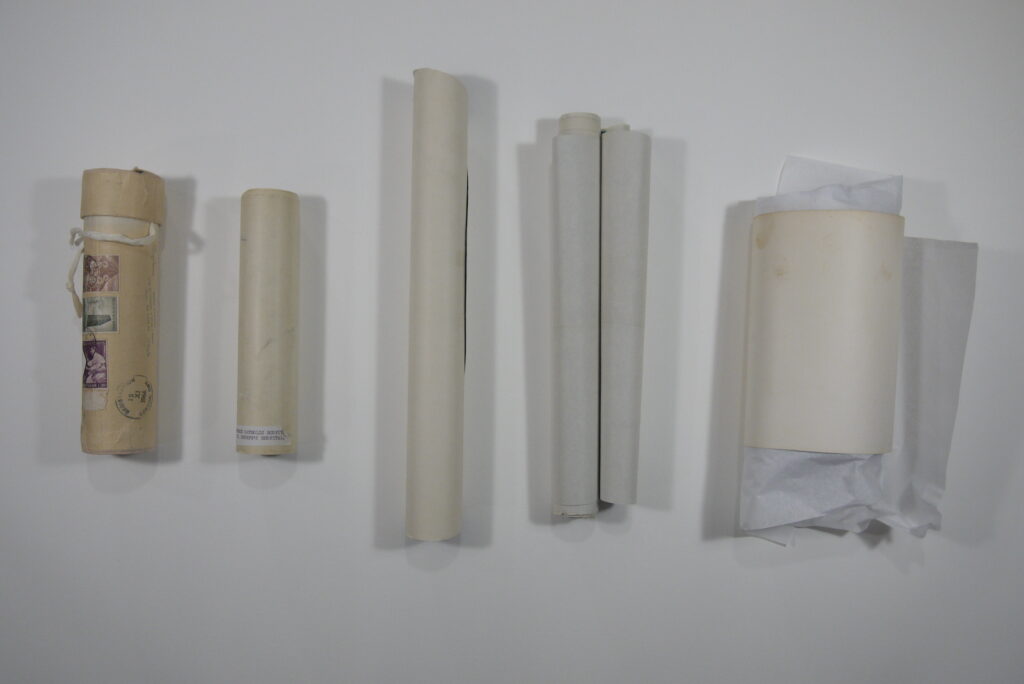
Rolled graphic materials before conservation treatment 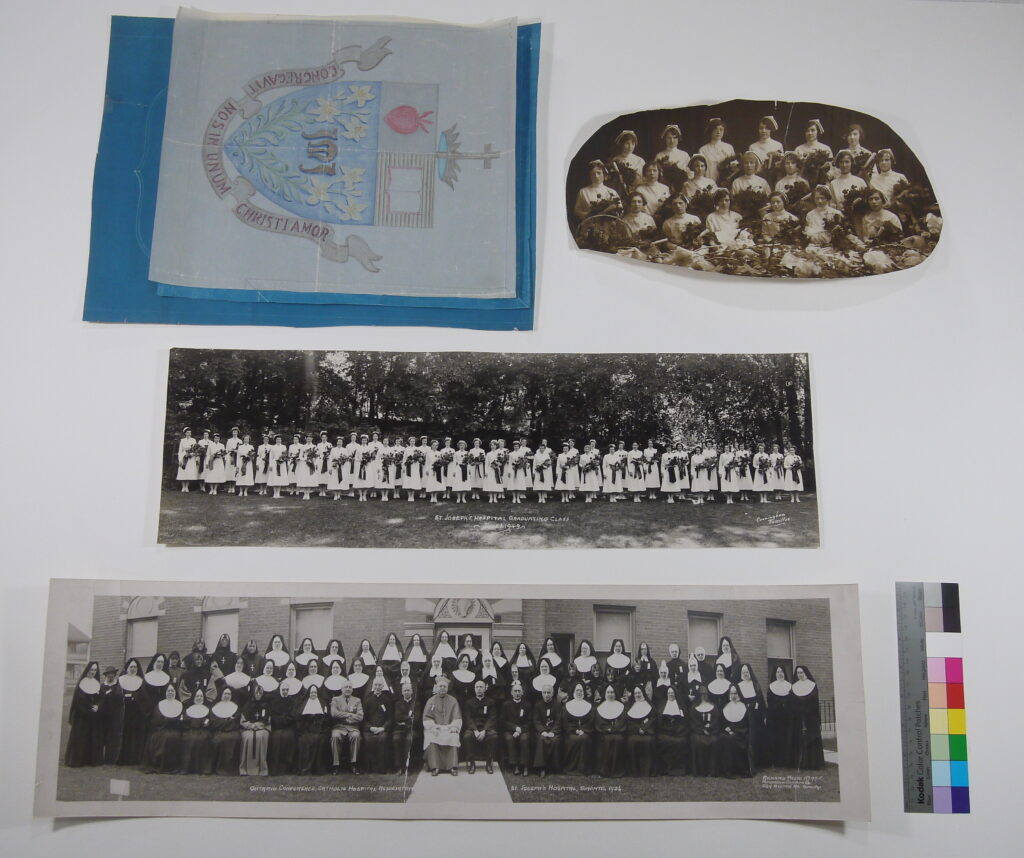
Graphic materials after conservation treatment
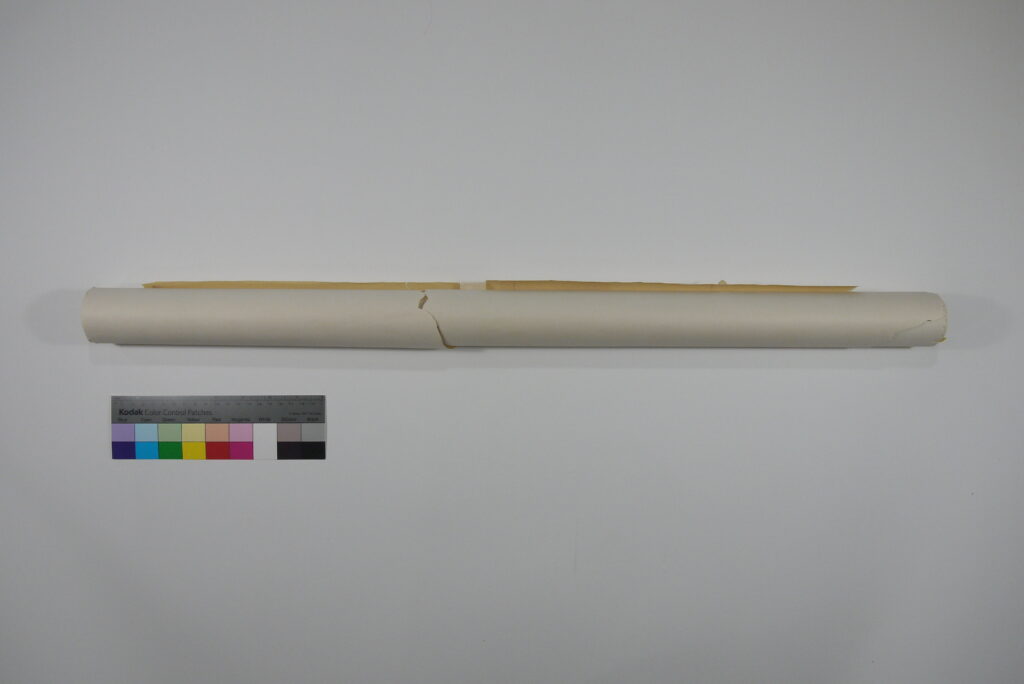
Rolled and torn map before humidification 
Rolled and torn map before conservation treatment 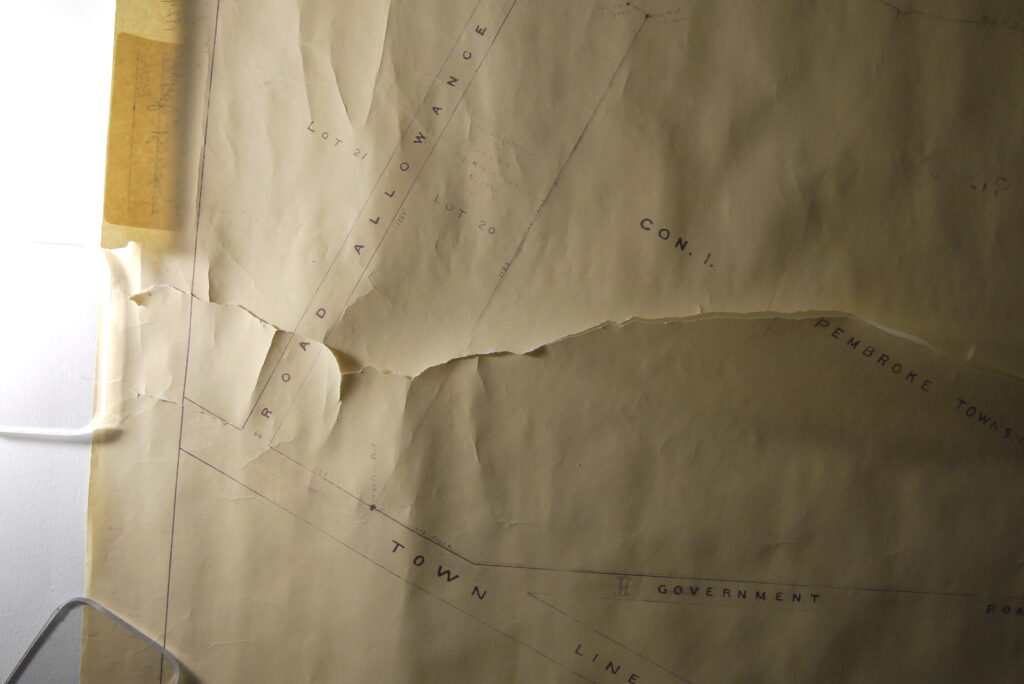
Detail of rolled and torn map before conservation treatment 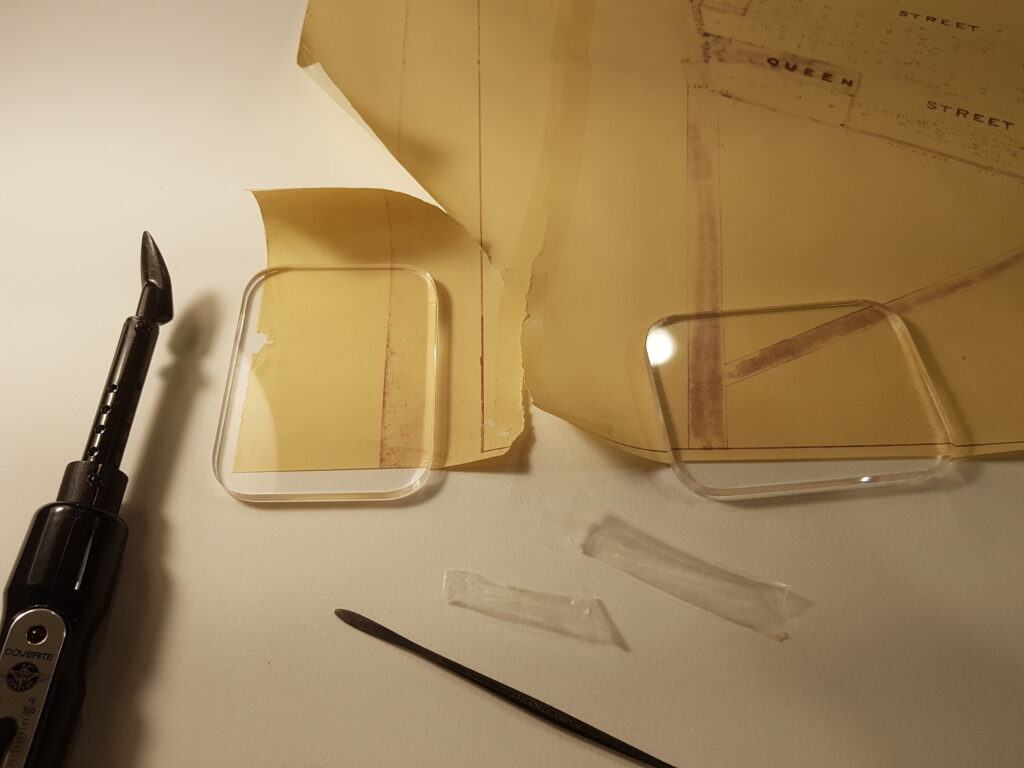
Rolled map – tape removal 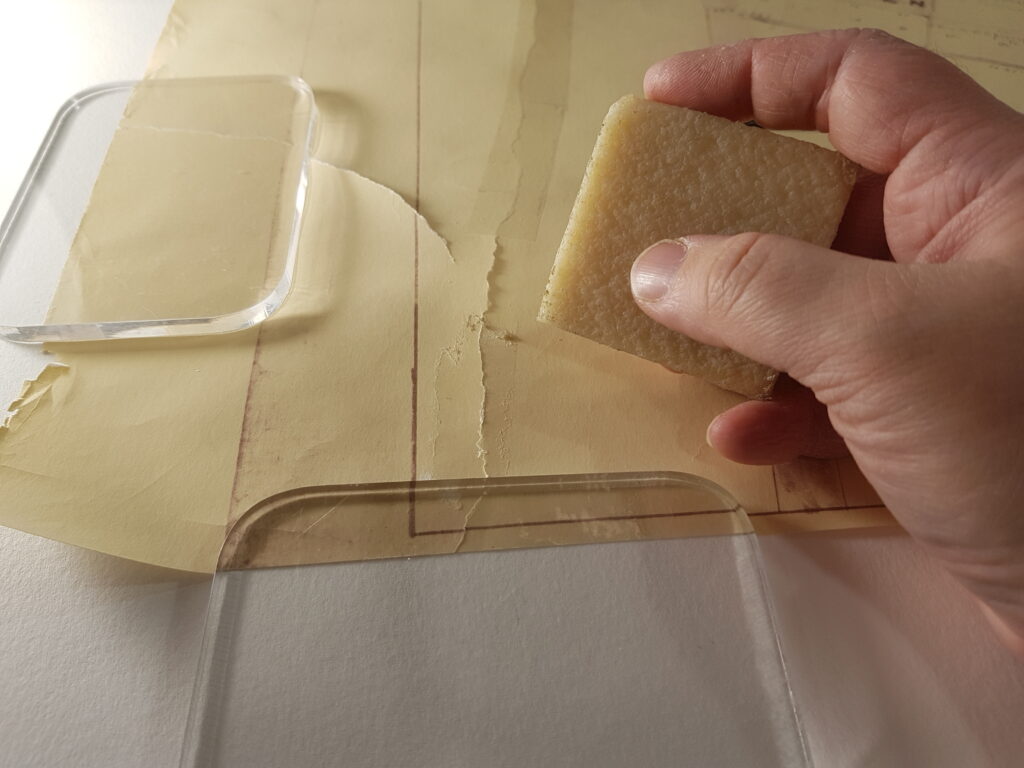
Rolled map – adhesive residue removal 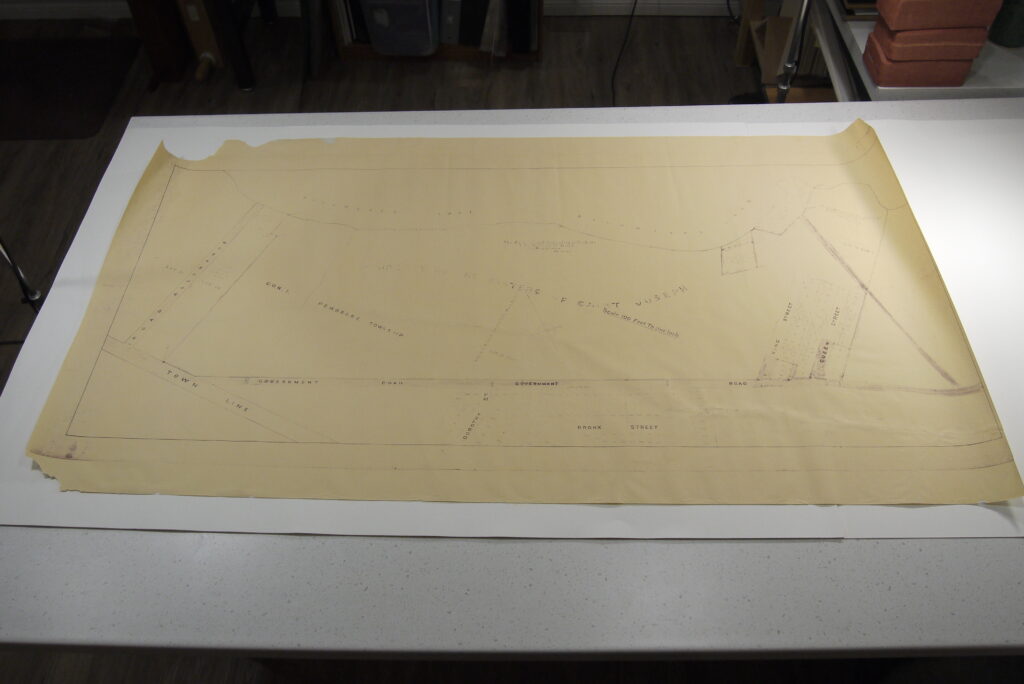
Map after conservation treatment
